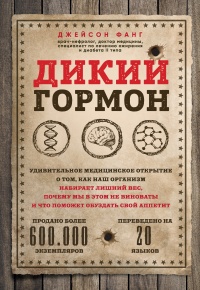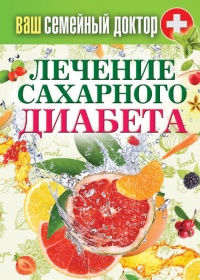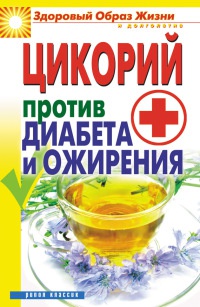Читать книгу "Код ожирения - Джейсон Фанг"
Шрифт:
Интервал:
Закладка:
12. National Research Council (US) Committee on Diet and Health. Diet and health: implications for reducing chronic disease risk. Washington (DC): National Academies Press (US); 1989. p. 7.
13. Zhou BF et al. Nutrient intakes of middle-aged men and women in China, Japan, United Kingdom, and United States in the late 1990s. J Hum Hypertens. 2003 Sep; 17(9):623–30.
14. Duffey KJ, Popkin BM. High-Fructose Corn syrup: Is this what’s for dinner? Am J Clin Nutr. 2008; 88(suppl):1722S–32S.
15. Bray GA, Nielsen SJ, Popkin BM. Consumption of high-fructose corn syrup in beverages may play a role in the epidemic of obesity. Am J Clin Nutr. 2004 April; 79(4) 537–43.
16. Beck-Nielsen H et al. Impaired cellular insulin binding and insulin sensitivity induced by high-fructose feeding in normal subjects. Am J Clin Nutr. 1980 Feb; 33(2):273–8.
17. Stanhope KL et al. Consuming fructose-sweetened, not glucose-sweetened, beverages increases visceral adiposity and lipids and decreases insulin sensitivity in overweight/obese humans. JCI. 2009 May 1; 119(5):1322–34.
18. Sievenpiper JL et al. Effect of fructose on body weight in controlled feeding trials: a systematic review and meta-analysis. Ann Intern Med. 2012 Feb 21; 156(4):291–304.
19. Ogden CL et al. Prevalence of childhood and adult obesity in the United States, 2011–2012. JAMA. 2014 Feb 26; 311(8):806–14.
20. Geiss LS et al. Prevalence and incidence trends for diagnosed diabetes among adults aged 20 to 79 years, United States, 1980–2012. JAMA. 2014 Sep 24; 312(12):1218–26.
Глава 15: Обман диетических прохладительных напитков
1. Yang Q. Gain weight by «going diet?» Artificial sweeteners and the neurobiology of sugar cravings. Yale J Biol Med. 2010 Jun; 83(2):101–8.
2. Mattes RD, Popkin BM. Nonnutritive sweetener consumption in humans: effects on appetite and food intake and their putative mechanisms. Am J Clin Nutr. 2009 Jan; 89(1):1–14. (This article is also the data source for Figure 15.1.)
3. Gardner C et al. Nonnutritive sweeteners: current use and health perspectives: a scientific statement from the American Heart Association and the American Diabetes Association. Circulation. 2012 Jul 24; 126(4):509–19.
4. Oz, M. Agave: why we were wrong. The Oz Blog. 2014 Feb 27. Available from: http://blog.doctoroz.com/dr-oz-blog/agave-why-we-were-wrong. Accessed 2015 Apr 9.
5. Gardner C et al. Nonnutritive sweeteners: current use and health perspectives: a scientific statement from the American Heart Association and the American Diabetes Association. Circulation. 2012 Jul 24; 126(4):509–19.
6. American Diabetes Association [Internet]. Low calorie sweeteners. Edited 2014 Dec 16. Available from: http://www.diabetes.org/food-and-fitness/food/what-can-i-eat/understanding-carbohydrates/artificial-sweeteners. Accessed 2015 Apr 12.
7. Stellman SD, Garfinkel L. Artificial sweetener use and one-year weight change among women. Prev Med. 1986 Mar; 15(2);195–202.
8. Fowler SP et al. Fueling the obesity epidemic? Artificially sweetened beverage use and long-term weight gain. Obesity. 2008 Aug; 16(8):1894–900.
9. Gardener H et al. Diet soft drink consumption is associated with an increased risk of vascular events in the Northern Manhattan Study. J Gen Intern Med. 2012 Sep; 27(9):1120–6.
10. Lutsey PL, Steffen LM, Stevens J. Dietary intake and the development of the metabolic syndrome: the Atherosclerosis Risk in Communities Study. Circulation. 2008 Feb 12; 117(6):754–61.
11. Dhingra R, Sullivan L, Jacques PF, Wang TJ, Fox CS, Meigs JB, D’Agostino RB, Gaziano JM, Vasan RS. Soft drink consumption and risk of developing cardiometabolic risk factors and the metabolic syndrome in middle-aged adults in the community. Circulation. 2007 Jul 31; 116(5):480–8.
12. American College of Cardiology. Too many diet drinks may spell heart trouble for older women, study suggests. ScienceDaily [Internet]. 29 March 2014. Available from: http://www.sciencedaily.com/releases/2014/03/140329175110.htm. Accessed 2015 Apr 9.
13. Pepino MY et al. Sucralose affects glycemic and hormonal responses to an oral glucose load. Diabetes Care. 2013 Sep; 36(9):2530–5.
14. Anton SD et al. Effects of stevia, aspartame, and sucrose on food intake, satiety, and postprandial glucose and insulin levels. Appetite. 2010 Aug; 55(1):37–43.
15. Yang Q. Gain weight by «going diet?» Artificial sweeteners and the neurobiology of sugar cravings. Yale J Biol Med. 2010 Jun; 83(2):101–8.
16. Smeets, PA et al. Functional magnetic resonance imaging of human hypothalamic responses to sweet taste ad calories. Am J Clin Nutr. 2005 Nov; 82(5):1011–6.
17. Bellisle F, Drewnowski A. Intense sweeteners, energy intake and the control of body weight. Eur J Clin Nutr. 2007 Jun; 61(6):691–700.
18. Ebbeling CB et al. A randomized trial of sugar-sweetened beverages and adolescent body weight. N Engl J Med. 2012 Oct 11; 367(15):1407–16.
19. Blackburn GL et al. The effect of aspartame as part of a multidisciplinary weight-control program on short- and long-term control of body weight. Am J Clin Nutr. 1997 Feb; 65(2):409–18.
20. De Ruyter JC et al. A trial of sugar-free or sugar sweetened beverages and body weight in children. NEJM. 2012 Oct 11; 367(15):1397–406.
21. Bes-Rastrollo M et al. Financial conflicts of interest and reporting bias regarding the association between sugar-sweetened beverages and weight gain: a systematic review of systematic reviews. PLoS Med. Dec 2013; 10(12) e1001578 doi: 10.1371/ journal.pmed.1001578. Accessed 2015 Apr 8.
Глава 16: Углеводы и защитные пищевые волокна
1. Data source for Figure 16.1: Cordain L, Eades MR, Eades MD. Hyperinsulinemic diseases of civilization: more than just Syndrome X. Comparative Biochemistry and Physiology: Part A. 2003; 136:95–112. Available from: http://www.direct-ms.org/sites/default/files/Hyperinsulinemia.pdf. Accessed 2015 Apr 15.
2. Fan MS et al. Evidence of decreasing mineral density in wheat grain over the last 160 years. J Trace Elem Med Biol. 2008; 22(4):315–24. Doi: 10.1016/j. jtemb.2008.07.002. Accessed 2015 Apr 8.
3. Rubio-Tapia A et al. Increased prevalence and mortality in undiagnosed celiac disease. Gastroenterology. 2009 Jul; 137(1):88–93.
4. Thornburn A, Muir J, Proietto J. Carbohydrate fermentation decreases hepatic glucose output in healthy subjects. Metabolism. 1993 Jun; 42(6):780–5.
5. Trout DL, Behall KM, Osilesi O. Prediction of glycemic index for starchy foods. Am J Clin Nutr. 1993 Dec; 58(6):873–8.
6. Jeraci JL. Interaction between human gut bacteria and fibrous substrates. In: Spiller GA, ed. CRC handbook of dietary fiber in human nutrition. Boca Raton, FL: CRC Press, 1993. p. 648.
Внимание!
Сайт сохраняет куки вашего браузера. Вы сможете в любой момент сделать закладку и продолжить прочтение книги «Код ожирения - Джейсон Фанг», после закрытия браузера.




